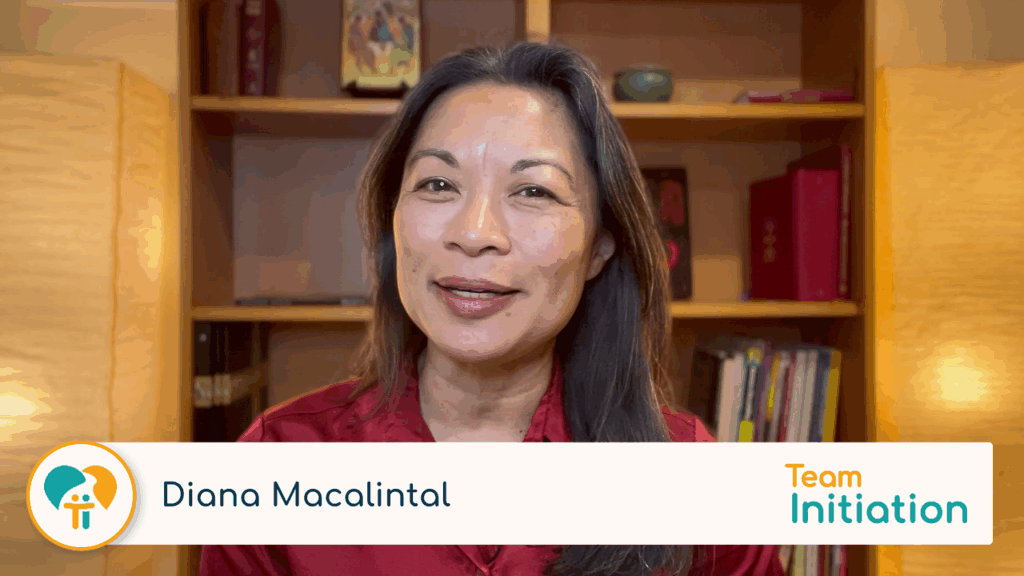 The renewal of the catechumenate is key to the renewal of our parishes. That was one of the points made in a recently released Vatican document, “The Pastoral Conversion of the Parish Community in the Service of the Evangelizing Mission of the Church” (Congregation for the Clergy, July 20, 2020).
The renewal of the catechumenate is key to the renewal of our parishes. That was one of the points made in a recently released Vatican document, “The Pastoral Conversion of the Parish Community in the Service of the Evangelizing Mission of the Church” (Congregation for the Clergy, July 20, 2020).
Given the time it takes for Rome to develop and issue instructions like this, I assume most of this was written well before the COVID-19 pandemic disrupted parish life. But it reads as though the Vatican is directly responding to the challenges caused by the shutting down of our parishes since March.
As a living community of believers, the Parish finds itself in a context whereby the territorial affiliation is increasingly less evident, where places of association are multiplied and where interpersonal relationships risk being dissolved into a virtual world without any commitment or responsibility towards one’s neighbor. (9)
With the Parish no longer being the primary gathering and social center, as in former days, it is thus necessary to find new forms of accompaniment and closeness. (14)
The current Parish model no longer adequately corresponds to the many expectations of the faithful, especially when one considers the multiplicity of community types in existence today…. The Parish territory is no longer a geographical space only, but also the context in which people express their lives in terms of relationships, reciprocal service and ancient traditions. It is in this “existential territory” where the challenges facing the Church in the midst of the community are played out.
As a result, any pastoral action that is limited to the territory of the Parish is outdated, which is something the parishioners themselves observe when their Parish appears to be more interested in preserving a nostalgia of former times as opposed to looking to the future with courage. (16; emphasis added)
Is your RCIA reaching out to the margins of your community?
The instruction goes on to say that a parish community is not defined only by geography or membership. It is a missionary enterprise that evangelizes, celebrates the sacramental mystery of God, and reaches out with love to those on the margins.
We become filled with missionary zeal for this mission when, like the community in Acts,
- we are nourished by the transformative power of the Word of God and
- we celebrate and worship God’s mystery in the eucharist (see 19-22)
The next part is where catechumenate ministers want to pay attention. In order to be filled with missionary zeal to do the work of evangelizing, worshiping, and reaching out to the marginalized that defines a parish, we “need to rediscover Christian initiation, which generates new life, as it is placed within the mystery of God’s own life” (23).
Does it sound odd that a Vatican document is saying we have to “rediscover” initiation? Haven’t we always been baptizing? Yes, we have. But what we need to rediscover here is an initiation process that not only saves individual souls but also creates missionary disciples. The instruction says:
It is a journey that is ongoing, that transcends celebrations or events, because, in essence, it is defined, not as a duty to fulfil a “rite of passage,” but rather as a perpetual sequela Christi [a Latin expression that means “walking in Christ’s footsteps”]. In this context, it would be useful to establish a mystagogical itinerary that genuinely affects existence. (23)
What does a “mystagogical itinerary” look like for the RCIA?
Okay, let’s take a breath and review. This is a very powerful statement, and it is important that we let it all soak in. So far, we have been told:
- The old model of territorial, geographic parishes is no longer effective for the church’s mission.
- We have to convert our parishes into new forms that operate in the “existential territory” where people today interact, form relationships, and express their spirituality.
- As we explore new forms of parish, our link to tradition is that, like the missionary community in Acts, we nourish ourselves on the transformative power of God’s word and celebrate the living mystery of Christ in the eucharist.
- And to fill the community with missionary zeal for this work, we have to “rediscover” a style of Christian initiation that uses a “msytagogical itinerary” to lead seekers on a journey that traces the footsteps of Jesus.
Unfortunately, the document does not describe what a mystagogical itinerary looks like. However, if we look back to Pope Benedict XVI’s exhortation on the eucharist from 2007, we get quite a detailed description of what mystagogical itinterary would include. Pope Benedict identifies three key elements:
1. A look back
As an “existential” parish that is nourished on the word and celebrates the mystery of Christ, we first look back to see how we have encountered the mystery in the past. Throughout history, God has been drawing us closer, bringing us from darkness to light. If we truly encounter Christ in word and eucharist, today, how have our past encounters given us ears to hear and eyes to see?
2. A look at the present
The sacramental encounter of mystery in word and eucharist is made up of signs and symbols. In our scientific age, we tend to discount any information that cannot be coded into an app or a program. The mystery of God isn’t scientific. We have to learn (or recover) a different language. Pope Benedict says: “More than simply conveying information, a mystagogical catechesis should be capable of making the faithful more sensitive to the language of signs and gestures which, together with the word, make up the rite” (The Eucharist as the Source and Summit of the Church’s Life and Mission, 64b).
3. A look forward
Every mystagogical process concludes with a “so what?” If we really encountered the mystery of Jesus in word and eucharist, how were we changed? And how will we change the world because of that? Our own encounter is never solely about our salvation. It is about the transformation of all creation and bringing the world into unity with the Father.
This three-part road map does not seem like a very extensive itinerary. Until you dig a little deeper. The mystery of the cosmos, which has existed for billions of years, is an ongoing revelation of God’s amazing, grace-filled love for us. We can spend lifetimes “remembering” God’s story and yet barely glimpse the awesome mystery always before us.
Our present reality, which somedays can seem dreary and bleak, is actually filled with hope and promise. Every breath we take is an in-rushing of God’s Spirit, filling us with miraculous gifts for mission. Every step we take is a step along the path that Jesus walked, restoring the world to right relationship with God.
And the mystery of what lies ahead is both known and hidden. We know that we are one with the mystery of the Trinity, and yet the fullness of what that means is still part of our eschatological future when we will be fully restored to all those who have gone before us in faith.
This mystagogical itinerary needs to become the way our parishes function. It is the pattern for Christian living that will convert our communities and draw seekers to “a perpetual sequela Christi.”
Your Turn
How is the RCIA going to transform your parish after the pandemic? What steps are you taking now to lay the groundwork for that transformation? Share your thoughts in the comments below.


















This is a powerful and illuminating article. I continue to be grateful for TeamRCIA’s work for the church.
Thank you! I agree with Dan. A very valuable article as we look toward a very different future.
I think the bishops (at least our bishop) have opened up some possibilities by extending the faculties to confirm to local priests on a flexible schedule. I hope those faculties extend indefinitely or at least for a year or so for us to have some new welcoming options for the RCIA journey.